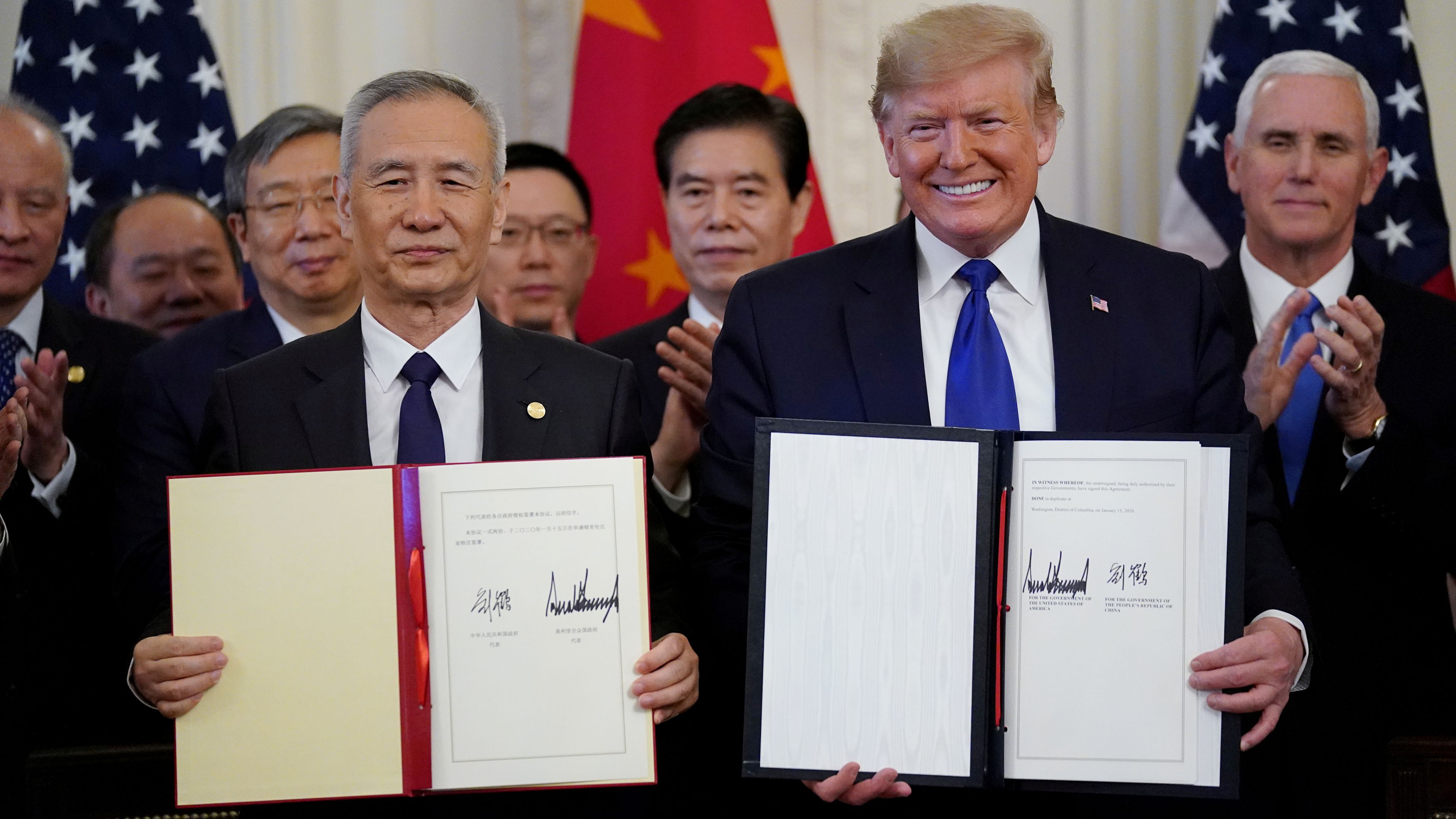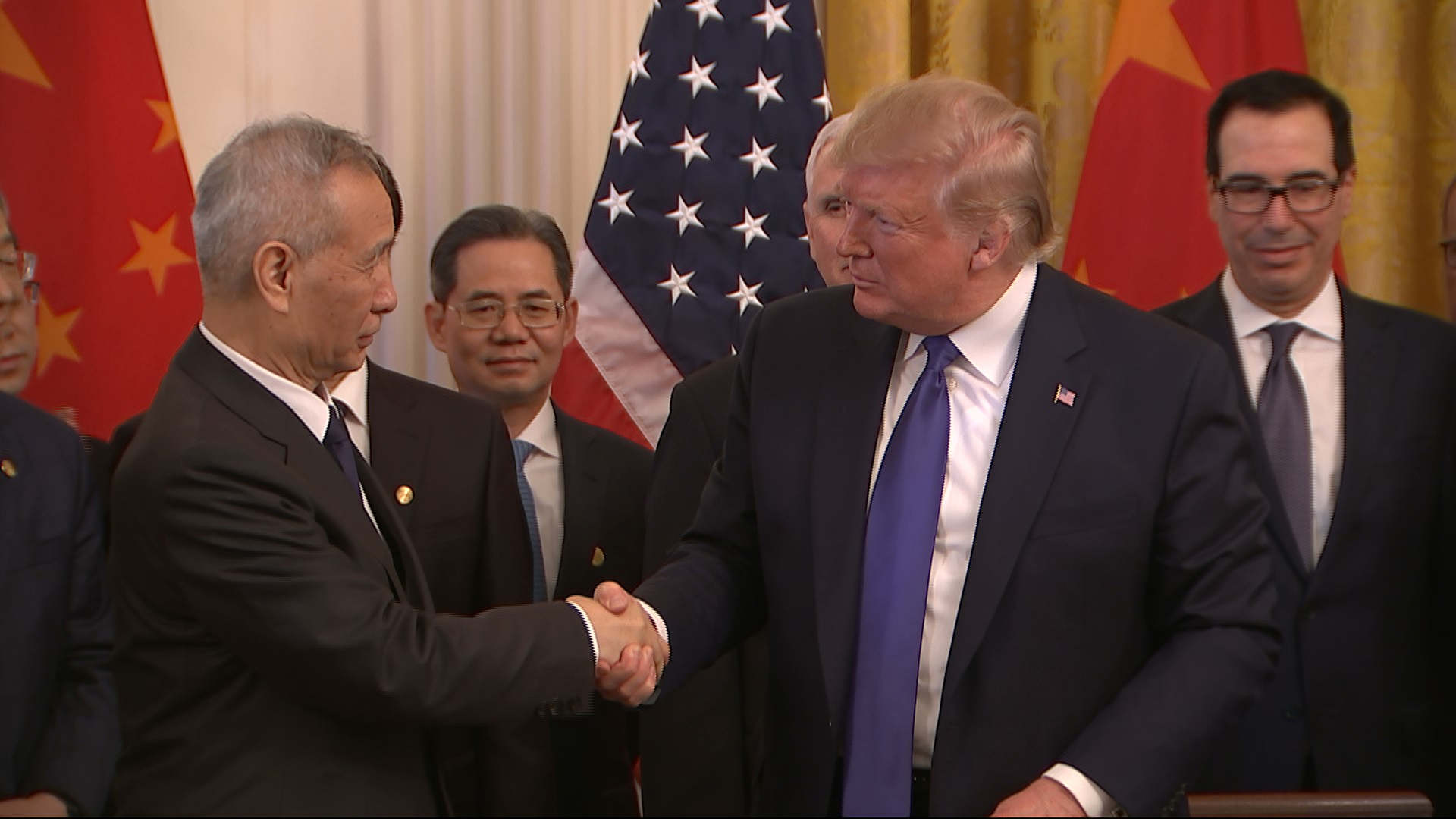
Chinese Vice Premier Liu He stands (L) with U.S. President Donald Trump after signing the China-U.S. phase one economic and trade agreement in the East Room of the White House in Washington, DC, January 15, 2020. /Reuters Photo
Chinese Vice Premier Liu He stands (L) with U.S. President Donald Trump after signing the China-U.S. phase one economic and trade agreement in the East Room of the White House in Washington, DC, January 15, 2020. /Reuters Photo
Editor's note: Zhao Hai is a research fellow at the Institute of World Economics and Politics, Chinese Academy of Social Sciences. The article reflects the author's views and not necessarily those of CGTN.
"This is the biggest deal anybody has ever seen," said President Trump in his usual pompous style when signing the phase one deal between China and the United States on January 15, 2020.
Maybe it's not the biggest, but certainly, the significance of this agreement cannot be underestimated. After nearly two years of fierce negotiating, what can we learn from the process and the deal?
Purchases not the key, intellectual property protection is.
Trump needs China to make big purchases to boost his electoral prospect in his reelection campaign, especially agricultural purchases, to compensate American farmers who have suffered great losses during the trade war.
However, China's commitment to spend an additional 200 billion dollars on U.S. goods and services over two years should be put into context. China and the U.S. have a combined GDP of 35 trillion U.S. dollars. So far, the total bilateral trade only accounted for 2.1 percent of their combined GDP, and the average planned increase of China's annual purchase will be merely 0.28 percent of their combined GDP and 13.5 percent of their total trade in 2018. With China's expected six-percent economic growth and the U.S.' two-percent in 2020, bilateral trade growth will be organic based on market principles, and the purchase target is not beyond reach.
What is really important in the agreement in the long run are the articles on intellectual property protection. Chapter one of the agreement addresses a wide range of intellectual property rights issues from the scope of trade secret misappropriation, burden-shifting in civil proceedings and computer systems to pharmaceuticals, patent term extension, piracy, counterfeiting on e-commerce Platforms, and trademarks and copyrights. Reform and improvement in these areas will help China attract more domestic and international investments in trade and technology, which will benefit China's long-term economic growth.

Chinese Premier Liu He (L) and U.S. President Donald Trump shake hands after signing the phase one trade deal at the White House in Washington, DC, January 15, 2020. /Xinhua Photo
Chinese Premier Liu He (L) and U.S. President Donald Trump shake hands after signing the phase one trade deal at the White House in Washington, DC, January 15, 2020. /Xinhua Photo
No one loses from the deal, except Washington's China hawks.
The phase one deal is good for Chinese consumers as well as American producers. Additional purchases of manufactured, energy and agricultural products will boost foreign demand for American goods and satisfy the demand for high-quality imports on the Chinese side. Meanwhile, further opening up the Chinese financial market will welcome more American investment, deepen China's integration with the global market, and provide Chinese people with more options in financial services.
The deal has alleviated fears of a China-U.S. decoupling. Given a more stable outlook, companies with complex supply chains across the Pacific won't have to make the hard choices to move production out of China, and Chinese exporters could return to a relatively normal schedule. Many other economies will also enjoy the relief of downward pressure on their growth.
However, the China hawks in Washington must be feeling bad about the world's two largest economies reaching a deal. For them, a win-win and pragmatic solution with China is not desirable nor obtainable, and any trade war truce could be an opportunity for China to replace American hegemony in the world. Fortunately, this deal has proven them wrong. But many of those hardliners are still in power to push their harmful agenda.
More to come, but it is a good start nonetheless
No deal in the world is perfect. The current China-U.S. phase one deal is the best that could be done under the current circumstances. Both China and the U.S. want a fair trade relationship, but the question is, what is fair in international trade? What rules, regulations and standards are fair, and who has the right to make them?
Globalization has made supply chains much more sophisticated and enabled service sector trade to grow dramatically. Thus, the global trade system is increasingly asking for conformity with the national borders. The phase two economic and trade negotiations between the two leading countries in the world may have global impacts and set new rules for World Trade Organization and other free trade agreement reforms. So, instead of fearing how difficult the following talks would be, let's be positive and hope the completion of the overall deal will be truly "the biggest deal anybody has ever seen."
(If you want to contribute and have specific expertise, please contact us at opinions@cgtn.com.)